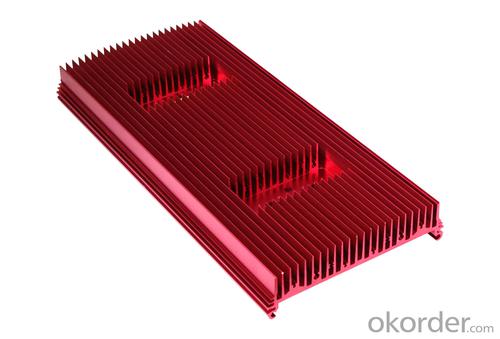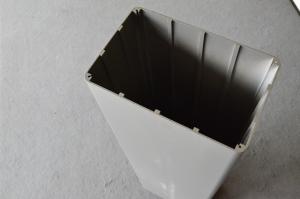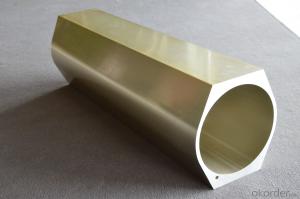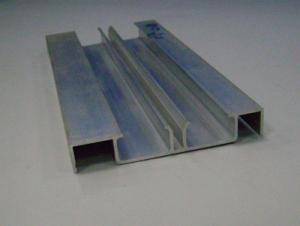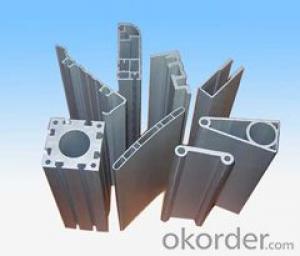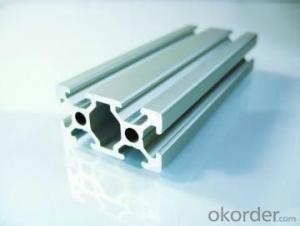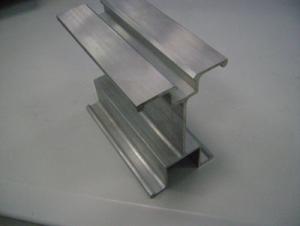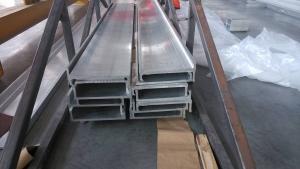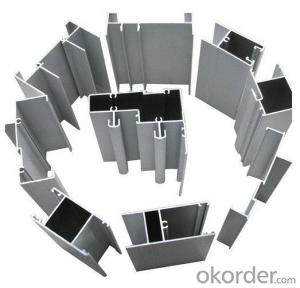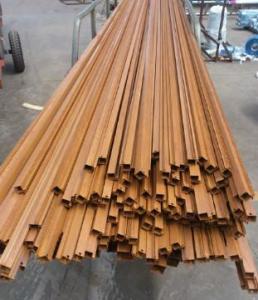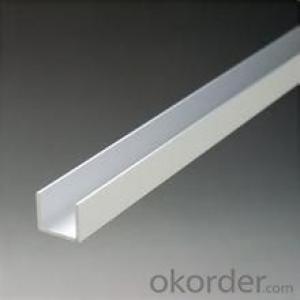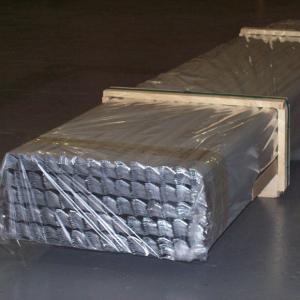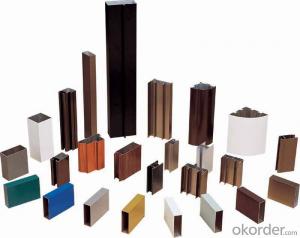Aluminum Extrusion Profiles New York - Aluminum Sections 002
- Loading Port:
- China Main Port
- Payment Terms:
- TT OR LC
- Min Order Qty:
- -
- Supply Capability:
- -
OKorder Service Pledge
OKorder Financial Service
You Might Also Like
Industrial aluminium profile
1)Material : 6063 6061 6060 and different aluminium alloy
2)Status:T4 T5 T6 or other special status
3)Surface treatment: mill finish, anodized sliver ,anodized bronze, anodized champagne, anodized black pearl, various power coating color, electrostatic sliver, electrostatic champagne, electrostatic golden, electrostatic titanium , machine polish sliver, machine polish bronze, wooden grain color, and Fluorocarbon spraying.
4)Annual capacity : 120000TON
5)Quality : China Nation Standard GB/T 5237 2008 (advanced class)
6)Use: can be widely using aluminium window, door, curtain wall, hand railing , normal aluminium profile, decorative and industrial aluminium profile
7)Advantage: Famous Brand reasonable&market price, soonest delivery and good after sale- service
8)Type of package:protection foam+heat contracted plastic film. / wooden packing / Metal pallet or depand on clientspecial requirement.
9)Payment term:T/T:30% of total value as deposite should paid by T/T within 3 days when confirmation ,and the remaining sum should be paid by T/T before delivery.L/C: 100% at sight
10)Delivery Day: 15-30days
11)Honor : CHINA FAMOUS TRADEMARK, CHINA TOP BRAND, ISO9001-2000, CHINA SQUARE&ROUND COMMITTEE DNV
- Q: How do you prevent warping or distortion of aluminum profiles during fabrication?
- To prevent warping or distortion of aluminum profiles during fabrication, several measures can be taken. Firstly, it is important to ensure that the profiles are properly stored and handled before fabrication, avoiding any bending or twisting. During the fabrication process, maintaining consistent and controlled heat is crucial. This can be achieved through proper temperature regulation and using appropriate welding techniques. Additionally, employing fixtures or jigs to hold the profiles in place during fabrication can minimize any potential warping. Lastly, allowing sufficient cooling time after welding or machining processes can help alleviate any residual stress that may lead to warping.
- Q: Can aluminum profiles be used for signage or display purposes?
- Yes, aluminum profiles can definitely be used for signage or display purposes. Aluminum is a versatile and durable material that is commonly used in various industries, including signage and display. Aluminum profiles provide a strong framework for signs and displays, allowing for stability and longevity. The lightweight nature of aluminum makes it easy to handle and install, making it a popular choice for outdoor signage and indoor displays. Additionally, aluminum profiles can be easily customized and fabricated into various shapes and sizes, allowing for creativity and design flexibility. Aluminum profiles also offer excellent resistance to corrosion, ensuring that the signage or display remains in good condition even in outdoor or high-moisture environments. This makes them suitable for a wide range of applications, including storefront signs, directional signs, trade show displays, exhibition booths, and many more. Furthermore, aluminum profiles can be powder coated or anodized to provide a decorative finish, enhancing the visual appeal of the signage or display. This allows for branding and customization options, making the aluminum profiles a great choice for businesses looking to showcase their brand identity. Overall, aluminum profiles are a reliable and versatile choice for signage or display purposes. They offer strength, durability, design flexibility, and resistance to corrosion, making them suitable for a wide range of applications in various industries.
- Q: Can aluminum profiles be recycled and reused for interior wall cladding purposes?
- <p>Yes, aluminum profiles can be recycled and reused in interior wall cladding applications. Aluminum is a highly recyclable material, and its recycling process does not degrade its properties, making it an excellent choice for sustainable construction. Recycled aluminum profiles can be used to create new wall cladding systems, reducing waste and the environmental impact of mining and processing new aluminum. This practice not only conserves natural resources but also contributes to energy savings and a lower carbon footprint.</p>
- Q: Can aluminum profiles be used in lighting fixture manufacturing?
- Aluminum profiles are indeed suitable for the manufacturing of lighting fixtures. In the lighting industry, aluminum is widely employed because of its many advantageous qualities. It possesses light weight, durability, and corrosion resistance, which make it perfect for both indoor and outdoor lighting fixtures. By easily molding and manipulating aluminum profiles, one can create diverse designs and forms, thereby enabling innovative and imaginative lighting solutions. Moreover, these profiles can be coated or anodized, thereby enhancing their visual appeal and providing extra protection against damage. All in all, due to their versatility, functionality, and aesthetic appeal, aluminum profiles are highly favored in the manufacturing of lighting fixtures.
- Q: Is it possible to utilize aluminum profiles as a material for exterior wall cladding?
- <p>Yes, aluminum profiles are commonly used for exterior cladding due to their durability, low maintenance, and resistance to corrosion. They are lightweight, easy to install, and can be designed in various shapes and sizes to suit architectural requirements. Additionally, aluminum profiles offer excellent weather resistance and can be painted or anodized to provide a protective finish and aesthetic appeal.</p>
- Q: This question asks for a list of various fasteners that can be used to connect aluminum profiles to building structures.
- <p>There are several types of fasteners used to attach aluminum profiles to building structures, including: 1. Bolts and Nuts: Commonly used for strong and secure connections. 2. Rivets: Provide a permanent connection by deforming the rivet when installed. 3. Self-tapping Screws: Can be used to create a thread in the aluminum profile without pre-tapping. 4. Adhesives: Used for bonding profiles together, often in conjunction with mechanical fasteners. 5. Welding: Although not a fastener, welding can join aluminum profiles together by melting and fusing the materials. 6. Clamps and Brackets: Used to hold profiles in place temporarily or permanently. 7. Dowels and Pins: Used for alignment and positioning of profiles. Each type of fastener has its specific applications and advantages depending on the structural requirements and design considerations.</p>
- Q: Can aluminum profiles be used for safety barriers or guardrails?
- Safety barriers or guardrails can be made from aluminum profiles. Aluminum is a material that is both lightweight and strong, with excellent durability and resistance to corrosion. These properties make it suitable for a variety of applications, including safety barriers and guardrails. It is easy to fabricate aluminum profiles into different shapes and sizes, allowing for customization to meet specific requirements. They can be used in various settings such as industrial facilities, construction sites, roads, and walkways. Aluminum profiles can be designed to endure impact and provide protection against falls or accidents. Moreover, aluminum profiles have aesthetic appeal as they can be powder-coated in different colors to enhance visibility or blend with the surroundings. They also require minimal maintenance compared to other materials. The long lifespan and recyclability of aluminum profiles make them a cost-effective solution for safety barriers or guardrails. They are resistant to weather conditions, including UV rays and extreme temperatures, ensuring their performance and longevity. In conclusion, aluminum profiles are a suitable option for safety barriers or guardrails due to their strength, durability, customization options, aesthetic appeal, low maintenance, and cost-effectiveness.
- Q: Are aluminum profiles suitable for constructing energy-efficient buildings?
- <p>Yes, aluminum profiles can be used to create energy-efficient building designs. They are lightweight, strong, and have excellent thermal conductivity, which can be utilized to design structures with reduced heat transfer, thereby improving energy efficiency. Aluminum profiles can also be used in combination with insulating materials to enhance thermal insulation. Their recyclability and low maintenance requirements contribute to sustainability, further supporting energy-efficient construction practices.</p>
- Q: What are the noise insulation properties of aluminum profiles?
- Compared to other commonly used soundproofing materials like wood or PVC, aluminum profiles demonstrate relatively poor noise insulation properties. Due to its lightweight and thin nature, aluminum allows sound waves to effortlessly penetrate it. Consequently, it fails to offer a substantial obstacle for sound blocking or absorption, resulting in minimal noise reduction. Nevertheless, the noise insulation capabilities of certain aluminum profiles can be enhanced through the inclusion of insulating materials or the utilization of thicker profiles. While these adjustments can somewhat improve the soundproofing performance, they may still not match the effectiveness of materials specifically designed for noise insulation.
- Q: This question asks for methods to prevent rusting on aluminum profiles during the installation process.
- <p>To prevent rusting on aluminum profiles during installation, follow these steps: Ensure the aluminum profiles are clean and free from any contaminants before installation. Use stainless steel screws and fittings to avoid galvanic corrosion. Keep the profiles dry and avoid contact with moisture. Apply a protective coating or sealant if the profiles will be exposed to harsh environments. Store aluminum profiles in a dry place to prevent moisture absorption. Regularly inspect and maintain the profiles to catch any signs of corrosion early.</p>
Send your message to us
Aluminum Extrusion Profiles New York - Aluminum Sections 002
- Loading Port:
- China Main Port
- Payment Terms:
- TT OR LC
- Min Order Qty:
- -
- Supply Capability:
- -
OKorder Service Pledge
OKorder Financial Service
Similar products
Hot products
Hot Searches
Related keywords


